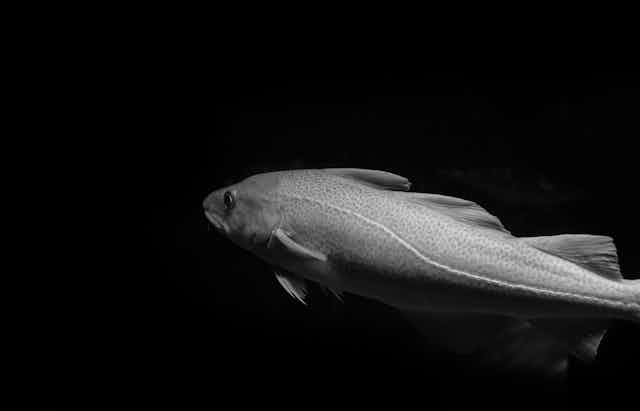Newfoundland’s northern cod was once thought to be an inexhaustible resource. In fact, much of the province’s history and culture continues to be linked with this iconic species. But in the 1990s, the northern cod population here collapsed by more than 99 per cent along with other groundfish species.
In addition to prolonged overfishing, this decline has been attributed to the ecosystem’s decreased productivity during a 15-year-long cold period in the Canadian Atlantic, resulting in less food availability for cod and other groundfish. The northern cod collapse brought about a fishing moratorium in 1992, putting more than 30,000 Newfoundlanders out of work.
In the following years, cod and other groundfish were much slower to recover than expected. Meanwhile, invertebrates such as snow crab and northern shrimp boomed. The soaring snow crab and shrimp fisheries fetched as much as ten times the price of cod.
Managing fisheries in ecosystems that undergo dramatic shifts in species dominance can be challenging — they are a moving target. As we explore ways to sustainably manage the fisheries of these moving targets, we need to have a flexible and adaptable management system, especially in times of a rapidly changing climate that is altering marine ecosystems globally.
Challenges for fisheries science and management
The Newfoundland story highlights a challenge for fisheries science and management. Fisheries catch quotas set by Fisheries and Oceans Canada relative to the baseline of the population of the specific fish species — also referred to as reference points.
Reference points serve as standards to assess the present condition of a fish stock in relation to a preferred (or undesired) state. They guide setting sustainable limits of fishing quotas.
Quotas are set to prevent overfishing. Typically, fisheries targets aim to keep population biomass — the overall population size — at about 50 per cent of the unfished population baseline. In general, a fish population is most productive when it is at this level.

Within fisheries management agencies in Canada, there has been a move to implement “limit reference points”.
These limit reference points mark the fine line between cautious and critical levels. If the fish stock falls below the limit, there is risk of serious harm to a fished population. Limit reference points are typically set between 20 to 30 per cent of the unfished biomass baseline.
If biomass falls below the limit, it is prudent to close the fishery until it recovers — although, in Canada, this decision is subject to ministerial discretion.
However, setting these reference points can be challenging when ecosystems are highly dynamic over time, as seen in Newfoundland. In a highly dynamic ecosystem, reference points based on outdated productivity regimes are ineffective.
Sometimes initial baselines of unfished biomass are no longer achievable under a new productivity pattern. Accounting for changes in productivity can help prevent fish stocks from collapsing.
A cutting-edge solution
The challenge of managing fisheries in highly dynamic ecosystems has a new solution — “dynamic reference points.” Dynamic reference points consider changes in the ecosystem and fish population productivity to inform sustainable fisheries targets and to set limits to avoid overfishing.
Dynamic reference points are a way to adapt fisheries management to environmental changes. For example, if a fish stock is less productive than it was historically and has a lower population size, dynamic reference points account for this change.
By accounting for the influence of the environment and other species on fish stocks, this approach provides a bridge between fisheries management of individual species and an ecosystem-based fisheries management.
Traditional fisheries reference points assume the environment and ecosystem are stable. This might be reasonable in some cases, but as climate change is shifting species ranges and causing greater changes in environmental conditions, ensuring reference points reflect these changes is important to sustainably manage fisheries.
Overcoming barriers
The uptake of this cutting-edge approach for fisheries management practices is not without barriers. Based on our global expert survey, just published, only 10 per cent of reported fisheries used dynamic reference points.
Our study found that institutional inertia and uncertainty about whether changes in ecosystems or fish stock productivity are lasting or not are some of the main barriers to the implementation of these dynamic reference points.

Government institutions that manage fisheries can be slow to adopt new approaches. This may benefit fishing industries, as they know what to expect. However, as climate change increasingly affects marine ecosystems and the fisheries they support, dynamic reference points provide a solution to adapt to these changes.
Overcoming the barriers to implementation of dynamic reference points is key for fisheries management agencies to effectively respond to highly dynamic ecosystems. While uncertainty about if changes in ecosystems or fish populations are lasting might never be removed, implementing dynamic reference points may promote early detection of — and rapid response to — those changes.
Ultimately, this can help prevent devastating collapses in species such as the northern cod of Newfoundland.

